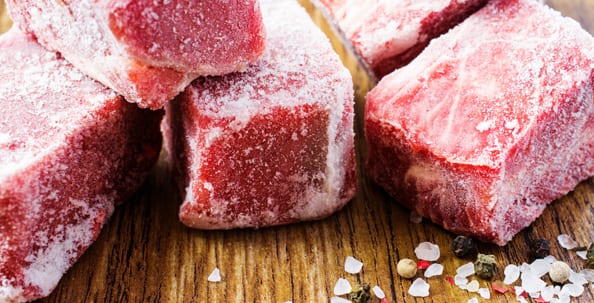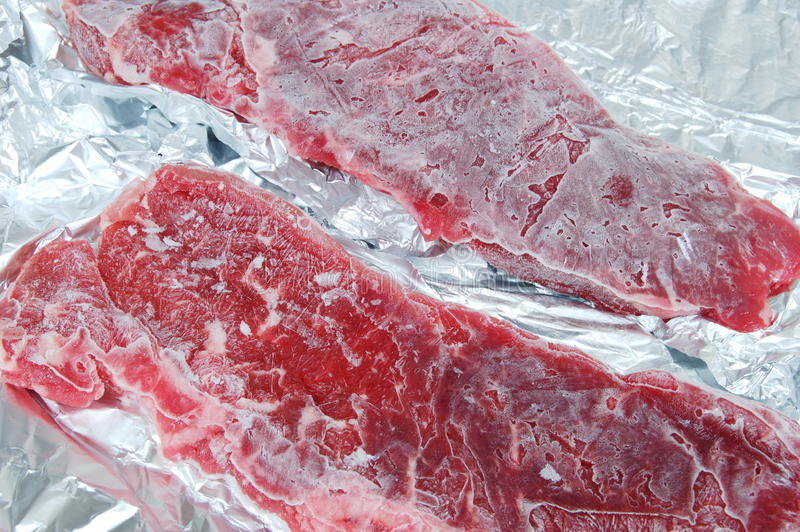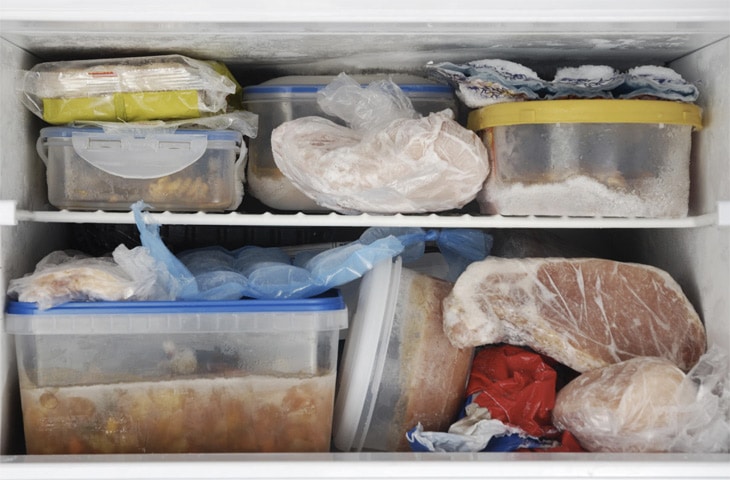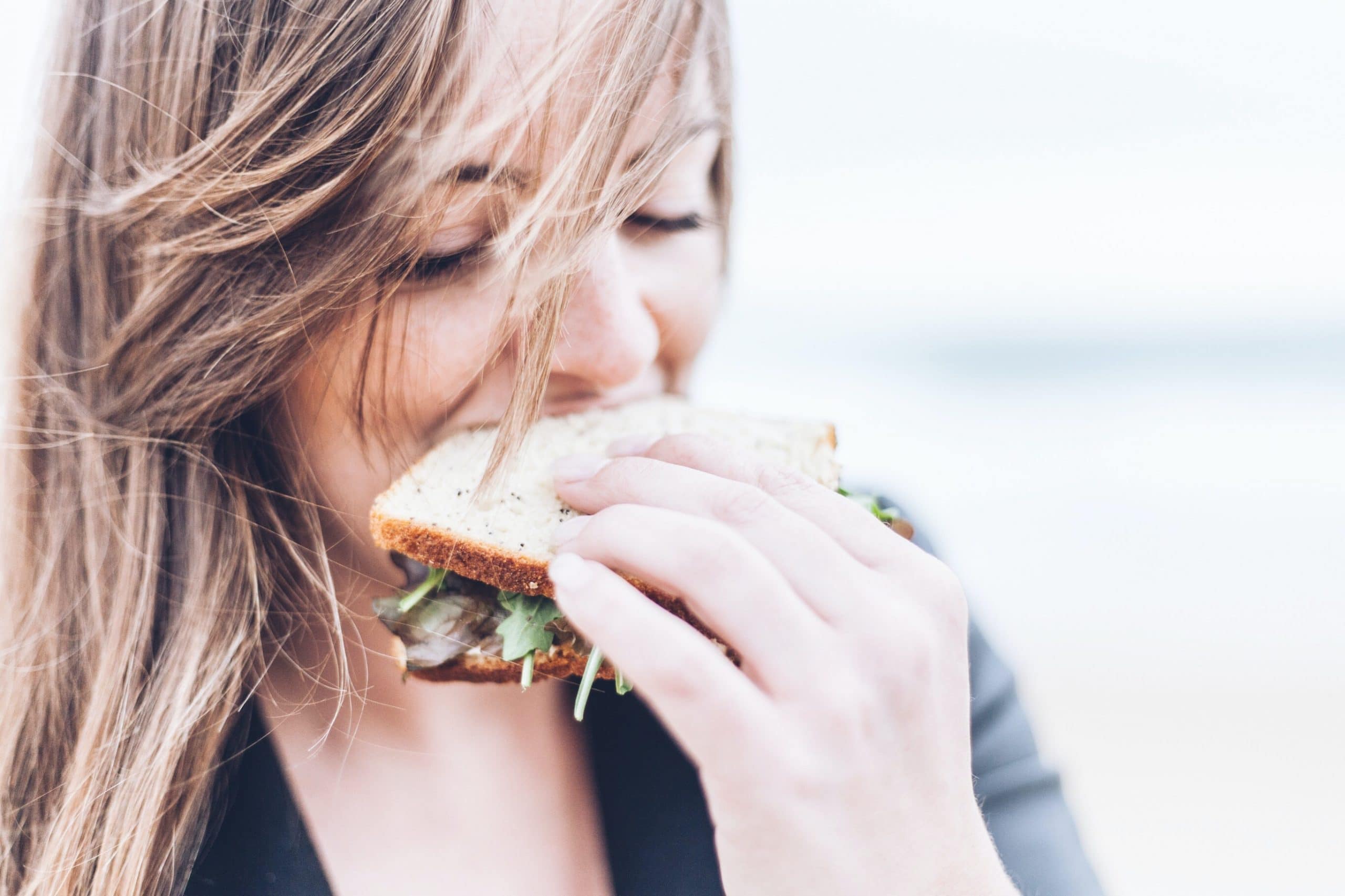Whenever we freeze something, we don’t usually expect that this food can go bad. However, it often happens that even in the freezing camera our products can be affected by the phenomenon called freezer burn.
Is freezer burn bad? What does freezer burn do to the food?
This and many other questions that you were wondering about will be answered in this article.
Read and memorize!
The Nature of Freezer Burn Phenomenon
Freezer burn tends to appear when food has been under the influence of cold for too long. In this case, the extended impact of the low temperature results in oxidation and dehydration, especially if the air and the moisture have free access to the surface of the food.
Many people, when facing this problem in their own fridge, ask a common question: does freezer burn ruin food?
In fact, there is nothing to worry about even though the freezer burn doesn’t look nice and the damaged food seems to be not edible anymore.
Since this phenomenon is simply a result of dehydration by its nature, there is no harmful bacteria or pathogen environment that can cause foodborne diseases.
However, you’d better know what to do to avoid this thing as discarding fresh food only because it’s freezer-burnt will not be good for the budget.
What Is the Major Sign of Frostbite On Food?

Is there a way to define that the food was frostbitten? Yes, there is a way one can do it.
Normally, freezer burn looks like greyish or brownish spots or darkened areas on the surface of the product (for example, meat). Sometimes, when the food has been under the impact of the low temperature for too long, there may be tiny white ice crystals on its surface which is also a sign of frostbite.
However, one needs to keep in mind that different products may have slightly different signs of freezer burn.
For instance, the freezer burn on bread looks like dry and somewhat leathery pale patches, often located on the outer edges of the loaf.
All kinds of meat and poultry with the freezer burn will either get those dark, brownish or grey spots on the surface, or the icy crystals cover.

On the other hand, the freezer burn on fish and seafood ( for example, shrimps) that are sold already being frozen, will have opaque white areas on them as a sign of the freezer burn.
The same is true for the fresh fish that was frozen at home.
It is also good to take into account that, when being freezer-burnt, the food may lose some of its qualities partly. For example, meat or poultry can become a bit stiffer which, nevertheless, doesn’t mean that it is spoiled.
What Causes Freezer Burn

There are several major reasons that can lead to the freezer burn signs on the food. Let’s take a closer look at them so that next time you see them you will know for sure what it is and what you need to do.
- The main and the most common cause of freezer burn is the improperly closed or sealed package.
If we don’t wrap or seal the food tight enough preventing the air from getting inside the tank or pack, its content will end up with the freezer burn sooner or later.
Improper packaging also opens the way to the moisture which is not good for the frozen products, as well.
- Another thing that can cause the freezer burn is the temperature of the food we are freezing. Never freeze the dish if it is warm or hot, especially when it is freshly cooked.
Instead, give it enough time to cool down or, if there is no time to wait for some reason, fill the kitchen sink with ice and put the pot or a casserole in it to decrease the temperature.
- Try to avoid keeping the freezer wide open too often. Also, always open and close it fast as the incoming warm air destroys the temperature balance inside which may lead to the freezer burn appearing on the food.
- Check your freezer just to make sure it works fine. Normally, the temperature in it must be at zero degrees or lower. If yours is not frosty enough, then it may be the source of the problem, too.
To prevent even the slightest freezer burn, always make sure the freezer door is tightly closed and the food inside is properly packed. For this purpose, use airtight freezer-friendly packs or tanks with no exposure to the air and moisture from outside.
Ways to Avoid Freezer-Burnt Food

Fortunately, it is quite simple to save the foodstuff from being burnt with the frost.
- Always pack it tightly and double-check that no air gets inside the package.
Plastic wrap and the resealable tank will be the optimal choice.
- Also, check the temperature of the foodstuff before freezing it. It must be either at room temperature or lower.
- Finally, avoid holding the freezer door open and always open and close it quickly to prevent the air from getting inside.
When adhering to these simple tips, you will manage to prevent the food from frostbites which will save its taste, texture, and flavor.
How Freezer Burn Affects Our Health

Many people are worried about this issue because of the idea that freezer burn may be dangerous to our health.
Will freezer burn hurt you? No, it won’t. Since it is just a result of dehydration, it is absolutely harmless even though it doesn’t look nice. There is no harmful bacteria or pathogen environment caused by this phenomenon which means that the food is completely safe to consume.
The same, eating freezer-burnt food is absolutely OK only if you cut off the damaged parts before cooking it.
Now that you are aware of the basic signs of the freezer burn and know what to do to prevent it from appearing, it will be easier for you to keep the food frozen properly to extend its lifespan and enjoy it longer.